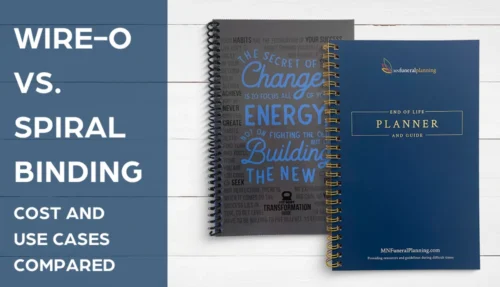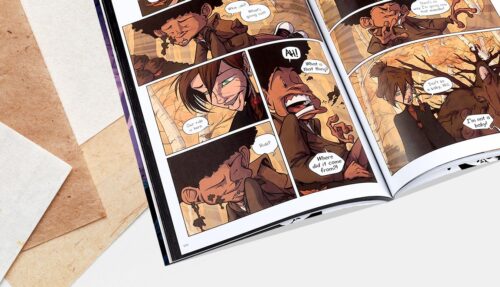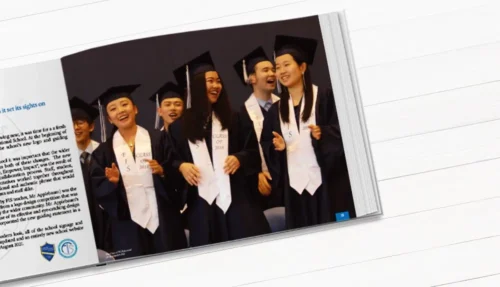We look at the benefits of offset printing for self-publishers and give our honest take on when it's the right choice for you — and when it's not
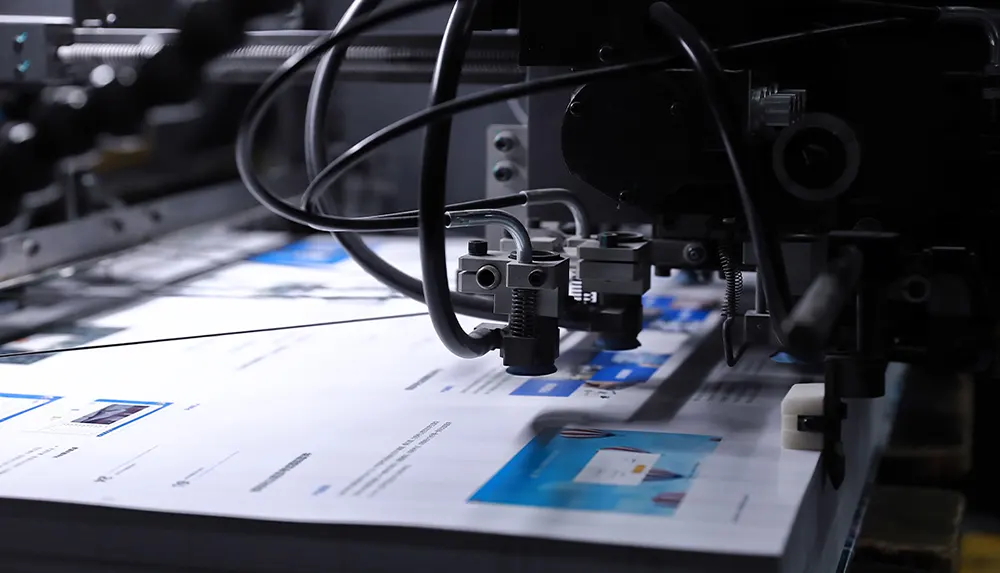
Self-publishing is becoming increasingly popular, and with that comes the need to find the best printing services to ensure your book looks great. Offset printing is one of the most popular printing methods and offers a wide range of advantages for self-publishers. In this blog, we’ll explore the benefits of offset printing services, look at the differences between offset printing and digital printing, and discuss when to choose offset printing services for self-publishing and bookbinding options.
Introduction to offset printing services
Offset printing services are an invaluable tool for self-publishing authors and small businesses alike. Offset printing is an efficient and cost-effective way to produce high-quality printed products, such as books, magazines, brochures, and other marketing materials. It works by using a printing plate, which stores the image or text to be printed. This plate is then transferred onto a rubber “blanket” and then onto the paper, leaving behind a clear and precise image. Offset printing allows for true-to-life color reproduction, resulting in vibrant prints with a professional finish. It also ensures that the quality of the prints is consistent, saving time and money.
Offset printing services provide a wide range of options for self-publishers, from book printing to magazine printing, and beyond. Whether you’re a new author looking to get your first book published, or an experienced business looking to create high-quality brochures, offset printing services can help. With its cost-effectiveness and precision, offset printing is the perfect choice for any self-publisher or business needing to print 100 copies or more.
Offset printing vs digital printing
Offset printing and digital printing are two different methods of producing printed materials. Both offer advantages and disadvantages, and it’s important to understand the differences to decide which one is best for your project.
Offset printing, also known as lithography, is the process of transferring an image from a printing plate to a rubber blanket and then to the paper. This process is used for high-volume jobs, as it’s quick and cost-effective for large runs. Advantages of offset printing include crisp, clean images and vivid, accurate colors. Also, the more copies you print with offset printing, the less you pay per copy.
Digital printing, on the other hand, is the process of printing directly from a digital file onto the paper. This method is great for shorter runs, as it is faster and more cost-effective. Advantages of digital printing include the ability to print on a variety of substrates, as well as the ability to easily make changes to the content.
So whether you’re looking for a high-volume job or a quick, short-run project, there are advantages to both offset printing and digital printing.
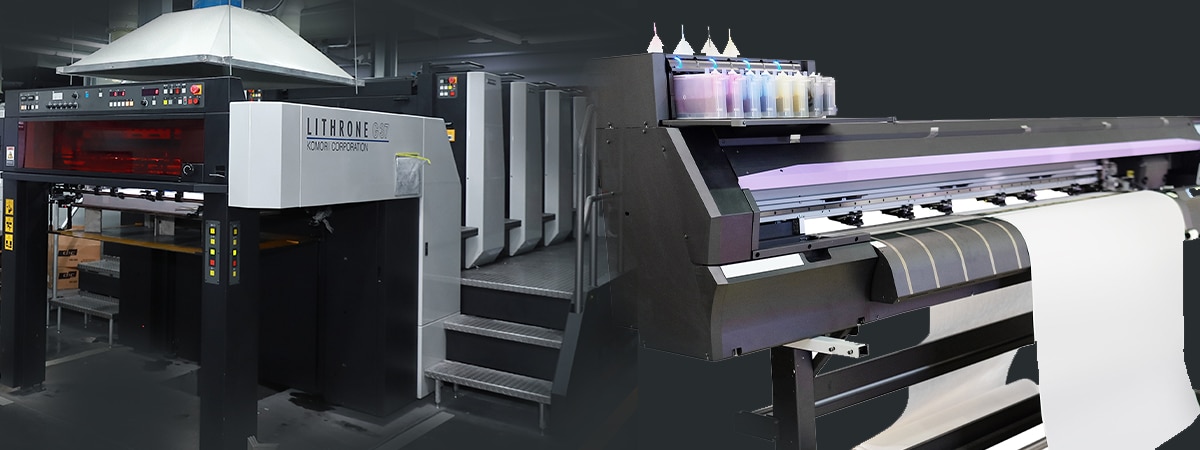
Offset printing vs print on demand
Print on demand (POD) is a form of digital printing that is often used for self-publishing. POD is a great option for authors who don’t want to order a large print run and are looking for a more cost-effective solution. POD is also great for authors who want more control over the publishing process, as they can make changes to the book on the fly and order just the amount of copies they need if they’re just starting out and are not confident of how many sales they’ll make. But if you already have a responsive email list and a secure fan base, offset printing will be better every time.
Why choose offset printing for self-publishing
Offset printing is one of the best options for self-publishing, as it is cost-effective for larger print runs and produces high-quality results. Offset printing is also more precise than digital printing, allowing for a greater level of detail in the printing process, especially if you need high-resolution art or photo reproduction. This means that self-publishers can get the best possible results for their books, without having to worry about sacrificing quality, which is often the first thing you lose with POD services
Pros and cons of offset printing
When it comes to offset printing, there are both advantages and disadvantages. On the plus side, as we’ve seen, offset printing is cost-effective for larger print runs and produces excellent quality results. But it also offers a wide range of customization options, allowing for a great deal of flexibility in the printing process, choice of paper and other materials, special effects and finishes such as embossing titles and gold or silver foil stamping to make a truly professional book. On the downside, offset printing can be more expensive for smaller print runs. It can also be slower than other printing methods. So, if you have an urgent order of only a few copies of anything, your local digital print store may be your best option. But if you have time to plan and need a larger volume of high-quality books, offset printing would be the best choice.
Bookbinding options
When it comes to self-publishing, it’s important to consider the different bookbinding options available. The most popular bookbinding options are perfect binding, saddle-stitching, and case-binding. Perfect binding is the most common form of bookbinding and is often used for books with a soft cover, commonly called paperbacks. Saddle-stitching is a popular choice for booklets, magazines, and shorter catalogs. Case-binding is used for hardcover books and is more durable than other bookbinding options.
Types of bookbinding
There are several different types of bookbinding available, depending on the type of book you are printing. Perfect binding is the most popular form of bookbinding and is commonly used for genre fiction such as romances, crime, mystery, science fiction, fantasy, and children’s books. Saddle-stitching is a popular choice for any publication with fewer than 48 pages. Case-binding is used for hardcover books and tends to be more popular with memoirists, biographers, history, and science writers, for example.
How to choose the binding for your book
When it comes to choosing the binding for your book, it’s important to consider the type of book you are printing, the size of the book, and the number of pages. Perfect binding is the most popular choice for books with up to 200 or so pages, while saddle-stitching is a great option for small books or booklets. Case-binding is the best choice for longer volumes or larger formats with thicker paper, such as an art book or a coffee-table book, for example.
How to create a budget for book printing with an offset printer
When it comes to creating a budget for book printing with an offset printer, it’s important to consider the cost of the printing services, the cost of the bookbinding, and the cost of any additional services such as design and formatting support. It’s also important to factor in the cost of shipping and any other fees associated with the printing process.
Prepare files for printing with an offset printer
When preparing files for printing with an offset printer, it’s important to make sure that the files are in the correct format—we will always ask you for PDFs—and that they are properly proofread and edited. It’s also important to ensure that the files are set up correctly for the printing process and that they meet the printer’s requirements. And make sure that all images used in the book are high-quality vectors or have at least 300 dpi resolution. We can’t design your book for you, but we have lots of expertise and we’re always happy to guide and support you. We also have a range of free downloadable templates to make everything easier at your end.
Talk to us!
Offset printing services are an excellent option for self-publishers, as they offer a wide range of advantages and can produce high-quality results. Offset printing is cost-effective for larger print runs and offers a great deal of flexibility and choice in the design process and the range of papers, binding styles, and special finishes, to make your book really stand out. When choosing an offset printer, it’s important to consider the cost of the printing services, the cost of bookbinding, and any additional services you may need. Over the last 25 plus years, we’ve built up a global reputation for excellence, unbeatable pricing, and fantastic customer service. Get in touch today to discuss your self-publishing print needs and we’ll help you draw up the best plan based on your budget.












